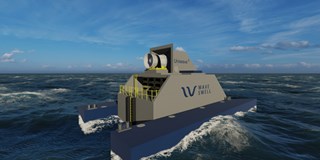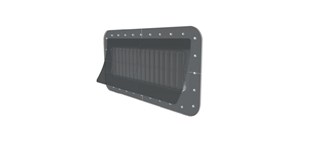Article by Daniel Sweet
___
When Scott Hunter arrived in Sydney two years into his engineering program, he knew he would eventually end up working on the water—but he didn’t know in what capacity. “I’ve always been into sailing, and at the beginning of my studies, I wanted to design yachts, travel the world, and chase after the coveted sailing trophy, the America’s Cup. But then in my final year, I was working a lot with computational fluid dynamics (CFD), and one of my supervisors by pure chance knew of a wave energy company that was looking for someone with CFD experience. I went along for an interview, and I was offered a job. I thought: this will be something different, maybe a six-month distraction before I go back to boats. 17 years later, and I’m still involved with wave energy.”
Wave Swell Energy
“More specifically,” Mr. Hunter continued, “I am chief technology officer for Wave Swell Energy. Wave Swell’s approach is based on an improvement to the oscillating water column (OWC), a fundamental design in wave energy. An OWC can be thought of as an artificial blowhole. The OWC sits in the water a short distance from the shore. Inside the column is a large chamber into which waves flow in and out. Traditionally, turbines connected to the top of the column are spun as air is forced into and out of the chamber by the movement of the waves, and the energy generated by the turbine is stored for reuse in the grid. But the movement of air in two directions in typical OWCs requires the turbines to spin bi-directionally, which is not efficient. What we found is that we can extract more energy from the ocean by venting the air to the atmosphere when the water enters the column. Then, we extract the energy generated by the air that is sucked into the column as the wave recedes. The obvious question is: by doing it this way, aren’t you missing out on half the cycle’s energy? But interestingly, when you vent air to the atmosphere as the wave enters the chamber, the wave can rise in the column a lot higher than it otherwise would. And that upstroke produces more energy than a complete cycle from a more traditional OWC.”
Mr. Hunter went on to mention that Wave Swell’s technology relies on valves for the critical venting function in their new approach to OWCs. “With our design, we quickly realized that we would need a reliable way to release the air inside the chamber as the water level rises. Because we don’t want any back pressure pushing on the rising water and restricting it from coming up freely, we also realized that we would need a passive valve instead of a controlled option. After all, the motion of the wave is erratic and based on minute-to-minute water conditions. The waves themselves are usually slow, taking between 12-14 seconds to rise and fall. But the period of that motion changes, and a valve that reacts to a signal, like pressure, would require fast actuators. In turn, that would lead to complexity, which adds cost, which adds potential failure, which leads to downtime. In other words: we wanted a passive valve!”





